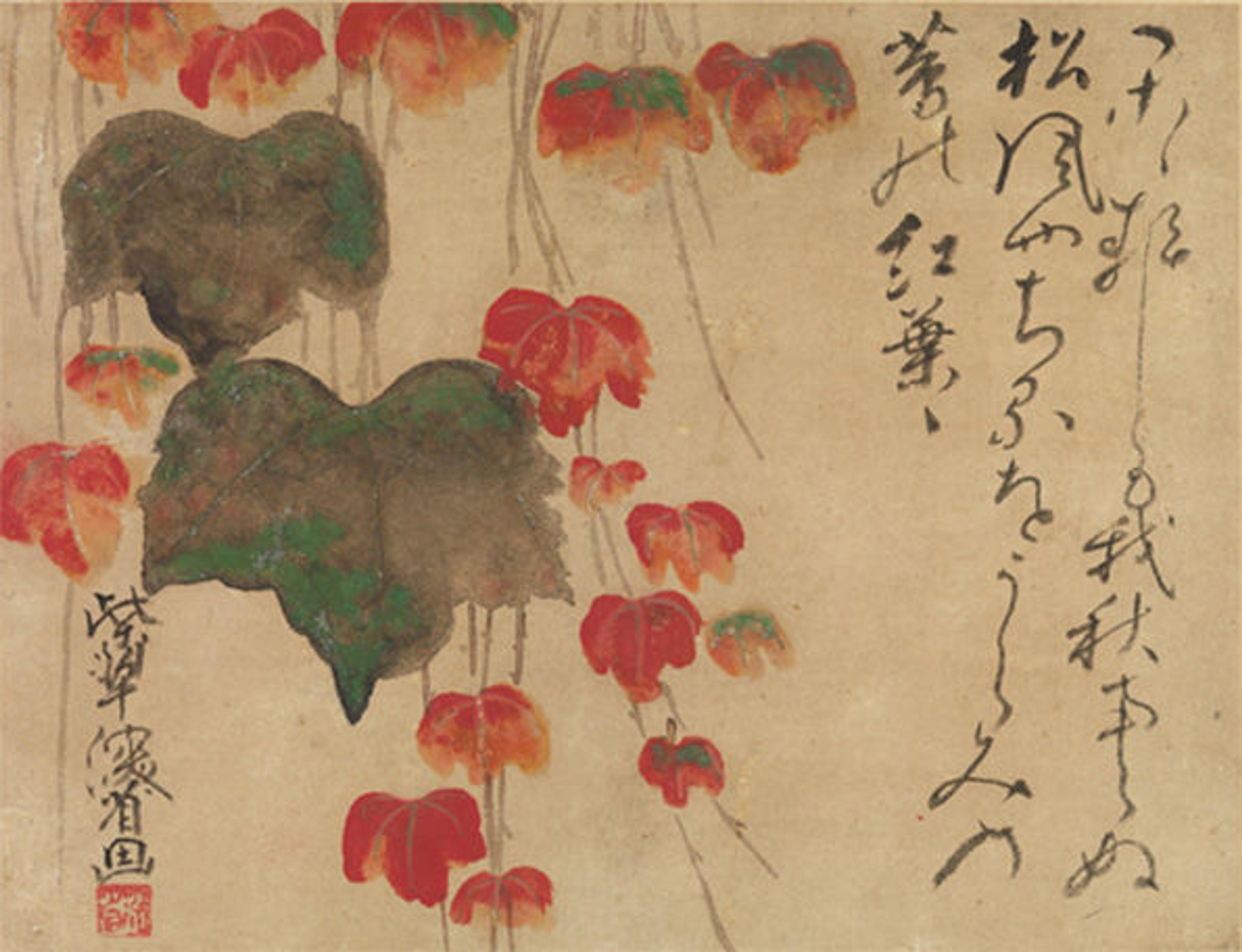Ogata Kenzan (Japanese, 1663–1743). Autumn Ivy, after 1732. Edo period (1615–1868). The Metropolitan Museum of Art, New York, The Harry G. C. Packard Collection of Asian Art, Gift of Joseph Pulitzer Bequest, and The Annenberg Fund Inc. Gift, 1975 (1975.268.67)
«In western society, people don't really notice the transition between seasons until it has already taken place. Artworks painted in the Japanese Rinpa style, by contrast, highlight a cultural focus on the seasons through natural imagery, vibrant colors, and connections to literature. This fall, in the exhibition Designing Nature: The Rinpa Aesthetic in Japanese Art, Ogata Kenzan's Autumn Ivy shows us how much one can appreciate nature through observation and reflection.»
Through the vivid colors of the ivy leaves, the artist evokes the ephemeral nature of human existence, and in the accompanying poem, he laments that the coming wind "will scatter the crimson leaves of ivy." The leaves recall chapter nine of the Tales of Ise, in which an aristocrat, banished by the emperor, walks through a path of ivy and meets a monk who had previously been his friend. The aristocrat suddenly realizes that his own hubris had been the cause of his ruin, and he decides to write a poignant letter to his wife about how much he misses her. By doing so, the aristocrat come to terms with life by admitting that nothing lasts forever, just as Ogata Kenzan has done in this artwork.
Inspired by stories from the Tales of Ise, our friend and fellow TAG member Genevieve created the drawing below.
Genevieve. Lamenting, 2012. Craypas and charcoal pencil on paper
What is your favorite aspect of autumn?
We welcome your response to this question below.
